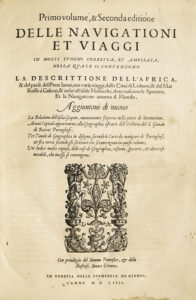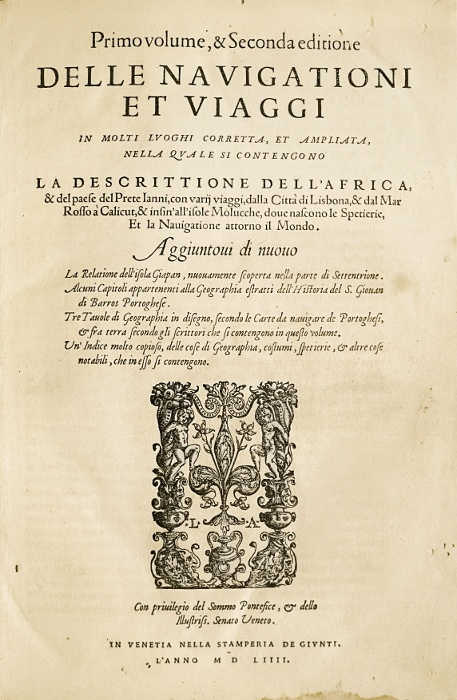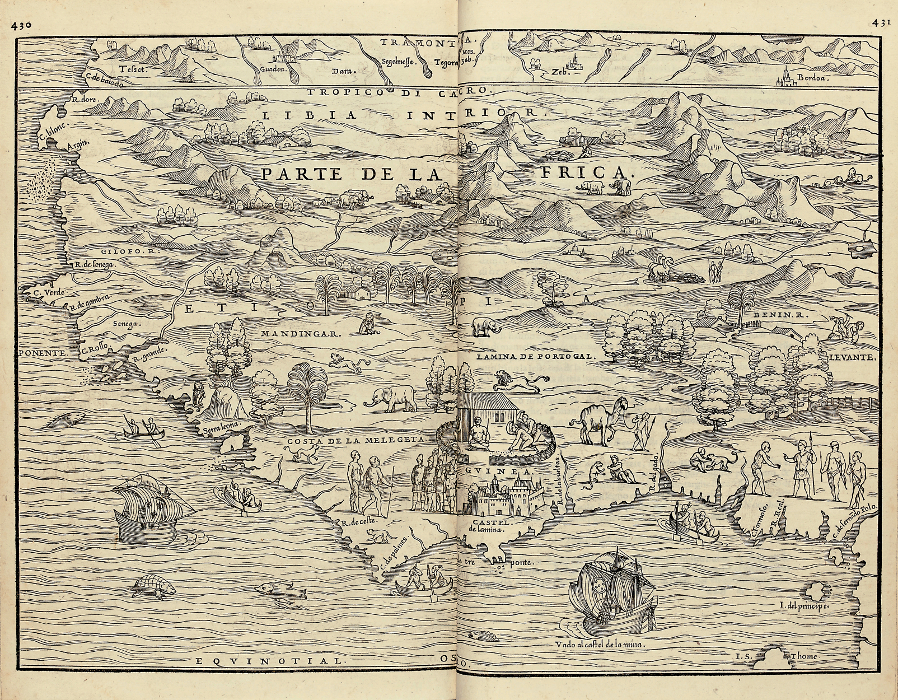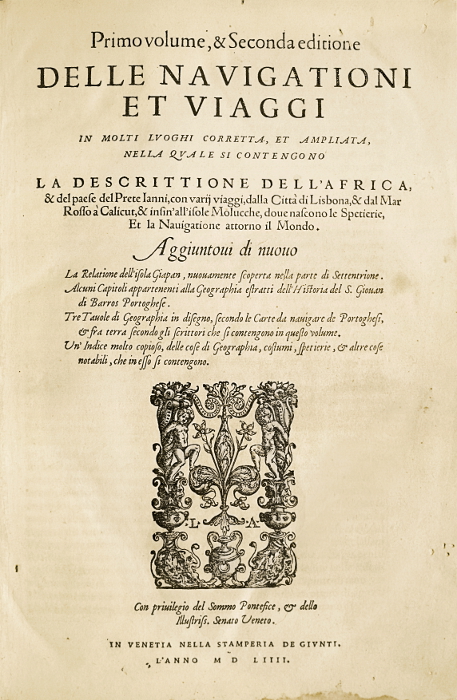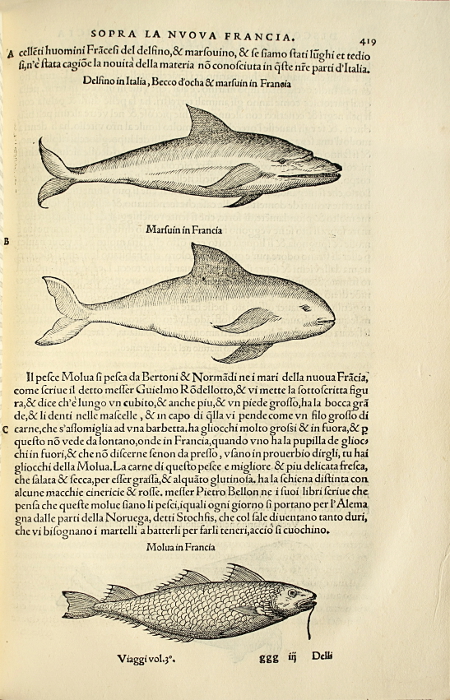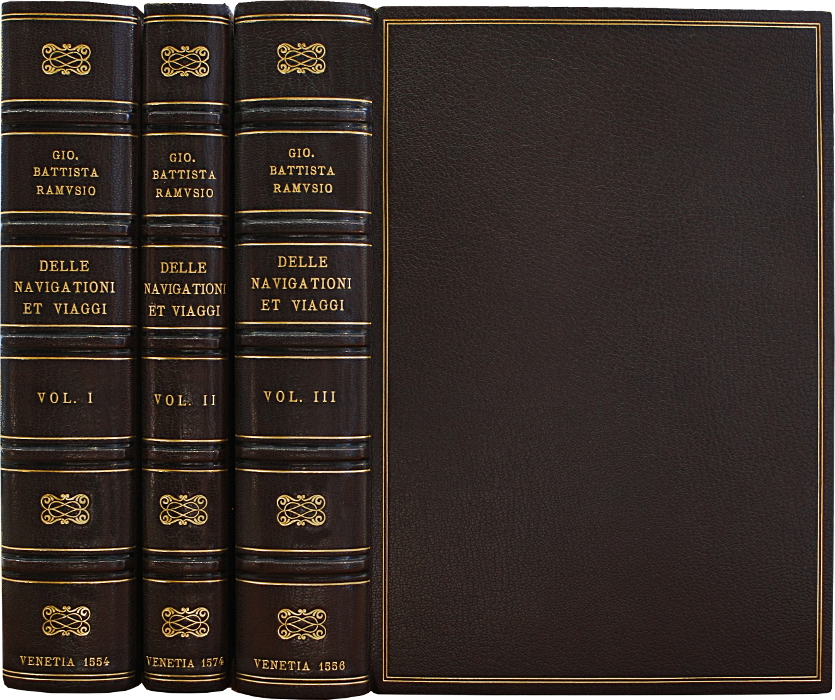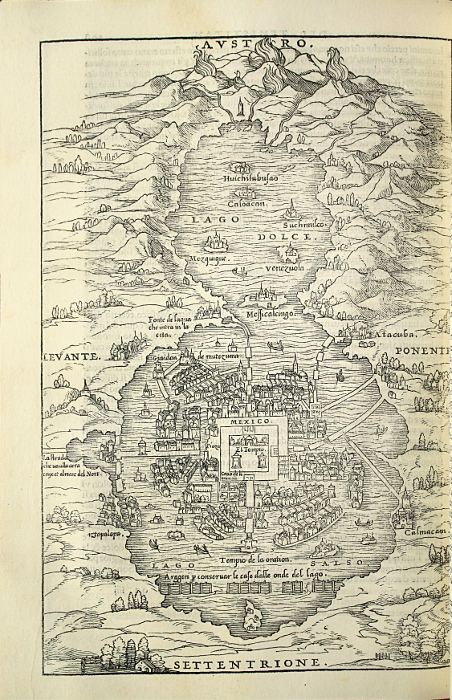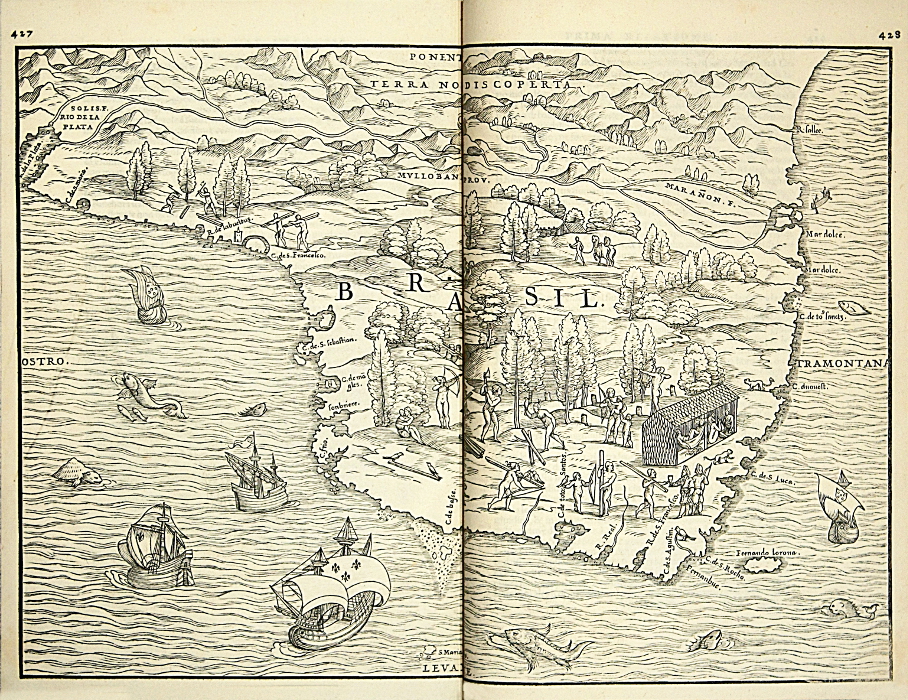Venetia, Stamperia de Giunti, 1554-74-56.
3 parts in 3 folio volumes [302 x 205 mm] of: I/ (4) ll., 34, 436 pp. including 5 engravings in the text and 6 full page engravings in the text, 3 double-page maps, handwritten notes in ink p. 193; II/ 30 ll. 248 ll. (some mistakes in the pagination), waterstain on the lower part of ll. 31 to 35, some browned lêves; III/ 6 ll., 34, 455 ll. misnumbered 456 including 7 double-page maps and plans, 2 full-page maps and plans, 1 full-page engraving, 39 engravings in the text. Some mistake in the pagination and a few handwritten notes in ink in the margin. Washed copy. Brown morocco, double-gilt fillet on the covers, spine ribbed and decorated with gilt fleurons, mottled edges. Binding from the 20th century. Case.
“Precious collection worth being very sought-after by travel collectors.” (Leclerc). Sabin 67731 for the 1st part; Sabin 67737 for the 2nd part; Sabin 67740 for the 3rd part; Harrisse 304; Church 99.
This lêding work of 16th century travel literature is undoubtedly the most important collection of travels and expeditions ever published, and it has opened a new era in travel literature.
“This is one of the êrliest and most important collections of voyages and travels, and may be said to have opened a new era in the literary history of voyages and navigation. This work… was the first grêt systematic collection that had so far appêred” (Hill 1418).
“Ramusio, who truly êrned the sobriquet of the Italian Hakluyt, was preeminent as an editor; he handled his material with grêt skill and produced a collection of unique value.” (Penrose, Travel and Discovery in the Renaissance, 1420-1620, p.306)
“Ramusio, who truly êrned the sobriquet of the Italian Hakluyt, was preeminent as an editor; he handled his material with grêt skill and produced a collection of unique value.” (Penrose, Travel and Discovery in the Renaissance, 1420-1620, p.306)
Copy composed of the first edition of the 3rd part and the second edition of the 1st and 2nd part.
The second edition, widely enlarged, of the 1st part, is the first and only one to present the 3 double-page maps representing Africa and India that had not been printed in the first edition of 1550, and which won’t be reprinted in the 3rd edition of 1563 since the wood plates of these 3 maps had been destroyed in the fire that ravaged Giunti’s workshop in 1557.
The first volume is mainly about Africa and South Asia, the second explores Central Asia and Russia while the author dedicates the 3rd volume to a detailed description of America including accounts of Peter Martyr, Oviedo, Cortes, Cabeza de Vaca, Guzman, Ulloa, Coronado, Fray Marcos di Niza, Xerez et Verrazano. The last part comprises the first publication of Jacques Cartier’s discoveries in Canada.
“This precious collection, which is worth being very sought-after by travel collectors, is too detailed in Camus’s memoir, so that we don’t need to mention its content. The pieces composing the 3rd volume dêl with America.” Leclerc, 484 (for a 1554-83-65 copy).
Each of the 10 superb double-page maps illustrating this collection is of the highest importance. They represent America, New-England, Canada, Brazil, Africa, Japan… Giacomo Gastaldi, grêt Italian cartographer and guardian of Ramusio’s children, is considered to be the author of these wonderful maps. Burden 34: Universale della parte del mondo nuovamente ritrovata: “This is the first American map to include any of the names from the travels of Francisco Vasquez de Coronado, the first Europên to travel extensively the south-western part of North America”; Burden 35: La Nuova Francia: “the first map devoted to New England and New France, the latter name being used here for the first time”; Betz 4: “It is the first printed map of Africa in a book to show a southbound river, the Zembere … [it] also shows for the first time on a printed map of the entire continent, the island of Madagascar”. Besides the work is decorated with historiated initials and engravings in the text showing the fauna and flora of the New World, as well as Indian customs.
Borba de Moraes (II: 698-99): “we are indebted to Ramusio for the preservation of accounts of … grêt importance to the history of Brazilian navigation”.
A precious copy perfectly complete of this superb collection of travels that always has been sought-after by travel collectors.
